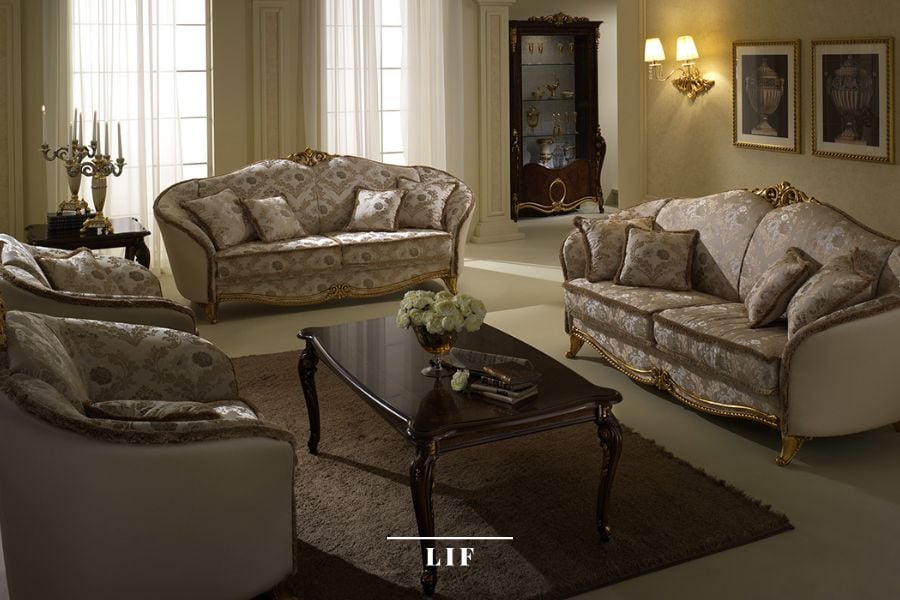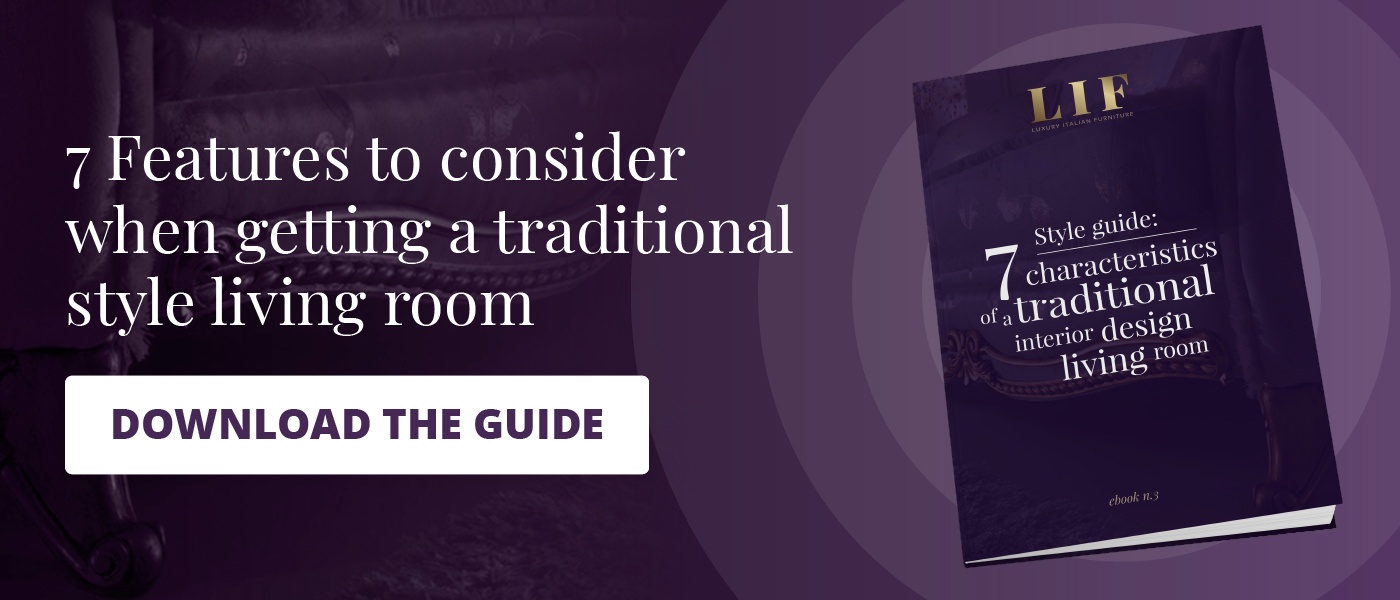When it is a matter of creating an interior design project, we mainly focus on the choice of furniture overall, the style of the furniture, the arrangement of the various pieces and the colours.
However, we often forget to make optimum use of the appearance of the floor, the primary component of every space, that deserves the right care and attention in a both a practical and aesthetic sense.
In this sense, it is possible to introduce accessories that make contact with the floor more pleasant, enhancing it, i.e. rugs and carpets.
Of all the different home furnishing accessories, carpets are those that are best suited to define the character and style of the room in which they are placed.
This is because they exist in an infinite number of aesthetic variations: depending on the material, workmanship, colours and graphic pattern, carpets create a different atmosphere each time and fill the space incomparably with their scenic presence.
Sometimes, all it takes to change the face of a room, making it more cosy and well-kept, is introducing a few well thought-out additions.
Imagine, for example, a long, bare corridor. All you need to do to enhance it is to lay a long, narrow carpet. Choose an attractive pattern or go for a high-quality material (depending on the style you want to achieve) and then add a few more decorative elements, such as pictures on the walls (art gallery effect) and plants.
Here, without major upheavals, a neglected-looking corridor can become a pleasant space to live in, even when it is only functional as a passageway to other rooms in the home.
These are design elements for the home provide floors with comfort and elegance and can be placed in the various rooms of the home, but it is in the living room that they become the undisputed protagonists of style.
In this article, we will focus on the aspects to consider when choosing the right carpet for the living area, and we will see how important it is to relate the various factors involved: the characteristics of the room (shape, size, floor plan, etc.), the level of brightness and the furniture style.
In the case of a furnishing project from scratch, the choice of the carpet will have to be in line with the other choices regarding the floor, the colour palette and the stylistic definition we intend to give to the interior.
It is clear that for a classic style living room we will have one type of carpet, for a contemporary style living room we will have another.
Before selecting fabrics and the textures of rugs or carpets to be placed in the living room, however, there are other important steps to take.
We will take a look and analyse the 3 essential steps, that if followed in order and consistently, will have a positive on your choices.
- Choosing the sizes of living room rugs and carpets depending on space
- You will then decide the most suitable thickness for rugs and carpets that will be used to fill your living room
- Making the choice of materials and type of rugs and carpets

Once the layout (shape, size) and ‘texture' (thickness, material) have been designed, we can move on to the aesthetic aspects of the carpet.
In particular, depending on the style of the living room (classic, neoclassical, Art Nouveau, Art Deco, contemporary, etc.) and the dominant colours, we can orient ourselves towards a specific type of carpet and choose colours and graphics that fit in coherently and harmoniously.
For example, finely crafted Persian carpets are ideal to complement the luxurious mood of a classic-style dining room, while the geometric patterns of Caucasian carpets are perfect for enhancing a contemporary-chic living room.
Choosing the sizes of living room rugs and carpets depending on space
The matter of size affects both rugs and carpets.
The main difference between the two is that, respectively, one covers varying portions of the floor while the other completely covers the floor, from one wall to the other.
Having an incorrect perception of the rooms may lead you to choose the sizes of living room rugs and carpets that are not proportional to the space available.
In any case, whether it is a rug or carpet, the choice of most suitable size for the spaces should be made in particular based on the measurement of the living room, and on its specific use, and on the items of furniture that fill the area.
The first consideration concerns proportions. Theoretically, the size of the carpet should be proportionate to the size of the room, as a matter of visual harmony. However, it is also important to consider what function the carpet will serve.
In the living room, there are mainly two roles played by the carpet: the role of protagonist in the centre of the room, or the role of 'wingman' to complete the relaxation corner composed of sofas, armchairs and TV cabinet.
In the first case, it holds a purely decorative function: what is needed is a beautiful, high-quality carpet, a catalyst of glances around which to build the rest of the interior design project by harmonising the style, material, decorative pattern and shade; in this case, we could dare with a large, showy carpet that enhances the splendour of a living room furnished with quality furniture in classic Italian style.
Let's take the “Melodia Collection living room” for example, where the gold and white hues of the furniture and fabrics conjure up the essence of Italian spirit for the love of classic, rich furniture.

If, on the other hand, the carpet serves to create an appendage of comfort around the sofa area, the ideal would be to choose a rectangular carpet of the same width as the sofa in front of which it is placed.
If the relaxation area consists of two armchairs or a corner sofa, it would be best to opt for two smaller rugs or place a rug with a more 'finite' circular or square shape.
In the dining room, however, the carpet is often placed under the table and chairs that dominate the centre of the room.
A stylistic choice that adds a touch of class and elegance, but also functional because it serves to define the perimeter of the dining area, as if it were a small oasis separate yet interconnected with the other typical pieces of the room (the display cabinets, sideboards, buffet furniture), generally positioned against the walls.
If the room is dominated by furniture with a lot of friezes, decorations and luxurious details, such as the art deco dining room from our Dolce Vita collection, it is better to choose a simple, ideally plain-coloured carpet that does not steal the show from the quality and design of the furniture.
What about colour? With the solid-colour weave, we will achieve a charming effect either by going with the light and bright palette of the Dolce Vita collection or by choosing a contrasting darker shade.
Deciding the thickness of living room rugs and carpets
How much does the thickness of rugs and carpets influence comfort and style?
Rugs and carpets which are not as thick are the result of a more consistent and intricate process, therefore they are not as soft to the touch and their texture is more complex and sought-after.
In this case the decorative aspect of the carpet is exalted, while the practical aspect is less so.
The thicker the carpet or rug, the higher the degree of their comfort. This does not mean that these types are less sophisticated, to the contrary.
It is simply a matter of searching for the thickness that is most suited to the living room overall and the use that is made of it. The choice of thickness for living room rugs and carpets depends on your personal preferences.
-1.jpg?width=900&name=ArredoClassic%20-%20Melodia%20(1)-1.jpg)
Making the choice of materials and type of rugs and carpets
This is the last decisive step for completing your living room furnishing, choosing carpets and rugs created with refined, high quality materials.
Carpet materials and rug production techniques
Talking about living room rugs and carpets inevitably leads to reasoning about materials and secondly about colours, embroidery and decorations that arise from processing each raw material.
Generally speaking, we can divide materials into natural or synthetic, but we tend to prefer the former for the product’s inherent quality. Here are the main materials used for a rich, elegant environment.
- Wool: a soft, warm, robust fibre, that is one of the highest quality natural materials for a rug, being perfect sumptuously decorated rooms. It can be worked in different ways to obtain different effects.
- Silk: stands out for finesse and quality, but is delicate and should be used in rooms where there is no heavy footfall. It permits a large range of weaves and inlays, that provide wonderful effects for the eyes and touch.
- Animal skin: robust, soft and natural, a daring, eccentric choice for most people.
Natural and synthetic fibres are also used to make carpets.
Types of carpets and rugs
The most refined types of production:
1. Hand-knotted rugs
Taftato rugs, i.e. Made by starting with a fabric base to which natural or artificial textile fibres are knotted
Depending on the type of product, we can divide the characteristic types of rugs and carpets into categories.
2. Persian rugs
The names of Persian carpets comes from some of the most important towns for production. For example Hamadan rugs and Nain rugs, to name a couple.
The main characteristic that distinguishes Persian rugs from other types is the hand knotting technique and the high number of knots. The central medallion is the distinguishing feature placed at the centre of Persian rugs.
Every detail of these masterpieces of Persian craftsmanship - from the quality of the materials to the accuracy of the workmanship, not to mention the brilliance of the colours and the artistic value of the decorations on the central medallion - makes them perfect for the most luxurious living rooms in the Made in Italy furniture tradition.
3. Afghan rugs
Octagonal patterns and göl are the typical decorations of Afghan rugs. They are of excellent workmanship made with Persian knots, and are recognisable by their dark red colour.

4. Caucasian rugs
The material used for the warp of this type of rug is cotton. The decorations follow the vertical, horizontal and diagonal lines and join up with geometric and floral patterns.
5. Pakistani rugs
These are made from wool and have a high density of knots. Pakistani rugs are made with open knots, a special technique that helps to alter the tone of colour when viewed. Pakistani rugs are typically red.
6. Chinese rugs
Chinese rugs are separated into antique rugs and more recent rugs. Antique rugs are quite thick, due to the presence of larger knots.
The more modern rugs are knotted using an asymmetrical technique. We can find religious symbols on antique Chinese rugs, while the more modern rugs have floral decorations and inlays that lend a three-dimensional appearance to the item.

There are three types of coating for carpets:
1. Bouclé
This is a soft, comfortable carpet suitable for the living area and areas with a heavier footfall in the home.
2. Velour
Soft and velvety, this is the most valuable type of carpet. It is suited to the bedroom and areas of the home used for receiving people.
3. Needle-punched
A needle-punched carpet is distinguished by its flexibility and robustness, and so is suitable for areas with a frequent footfall.
Why it is important to use carpets and rugs in the living room
Textiles add a personal, unique touch to furnishings in various areas of the house.
The living room, an area where you can unleash your creativity and desire to amaze, is no exception. You could place refined rugs in the most suitable spaces or lay down a soft carpet.
The importance of introducing these two furnishing elements lies in their ability to aesthetically enrich the room, without surrendering the possibility of having a completely comfortable living area.



